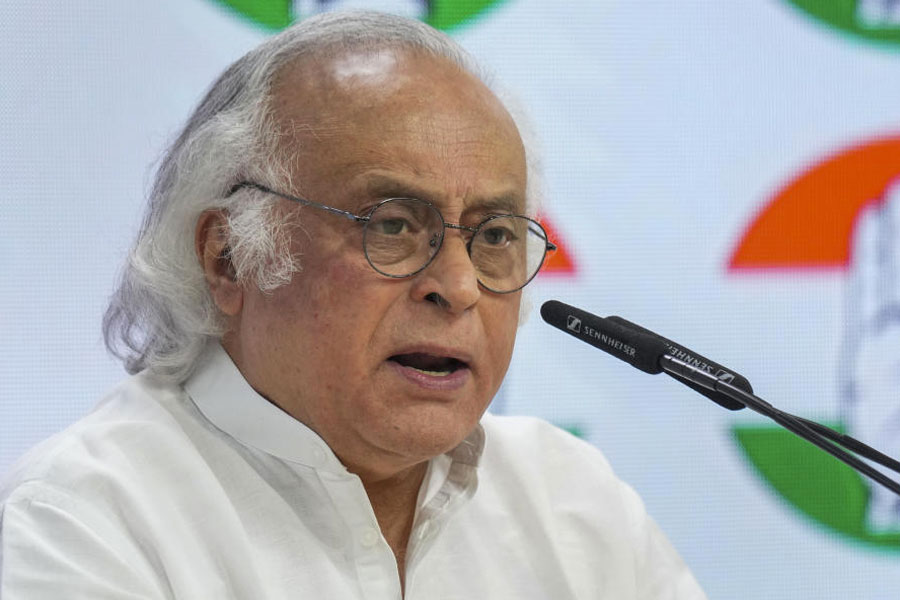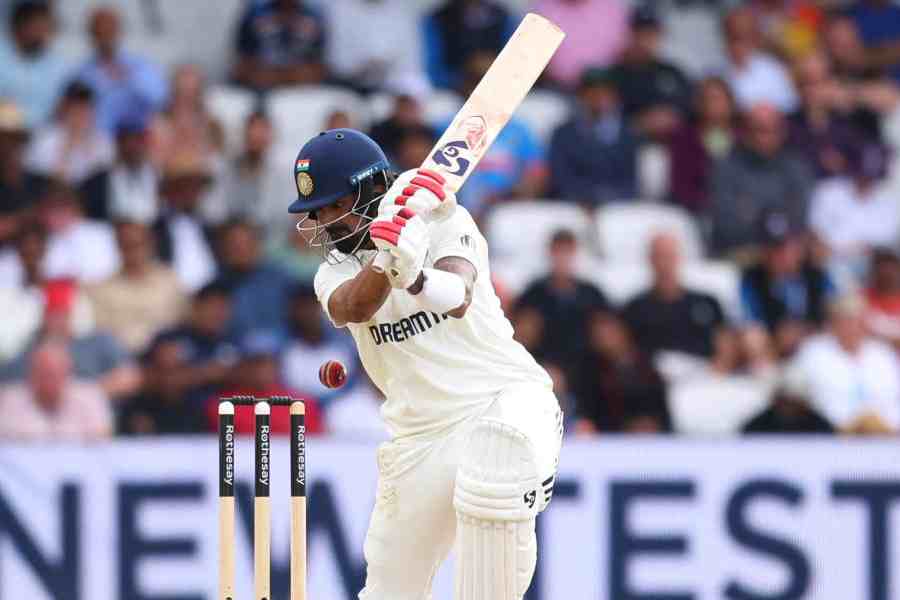 |
| Centre of attention: A child towers over a sea of heads at the Mohammad Ali Park pandal. Picture by Simon Wheatley |
Durga Puja/noun: A festival to propitiate the goddess Durga
Pandal/noun: A temporary structure erected for a function
Hop/verb: To quickly move or go from one place/activity to another
Calcutta: A city that hops from pandal to pandal every Puja
Non-resident Indian Subrata Biswas doesn’t mind the crowds, the slush and the sweat as long as he can “smell the pristine fragrance of Puja in the air”. North Calcutta trader Sanjeev Baid doesn’t mind travelling 20km and queuing up for two hours as long as he can tell his neighbour that he has been to the best pandal in town.
Puja 2009 has reinforced pandal-hopping as the city’s favourite festive activity, one that bridges almost all gaps.
According to traffic officers in Lalbazar, the final crowd count this Puja will be “25 to 30 per cent more” than last year’s.
But what drives lakhs of aching feet to the pandals, year after year, come rain or recession?
“The four days of Puja make even the most stressed-out person feel free-spirited. The glittering lights radiate a positive energy that is hard to resist,” explains psychologist Tapashi Mitra.
For NRI Biswas and his British wife Mary, Puja in Calcutta encapsulates everything that is “felt from the heart”.
“Puja is celebrated with fervour by Bengalis in Britain, too, but the Calcutta experience is unlike anything you will ever see. Being one of the faces in the crowd is part of that unique experience,” says Mary, who has been a “Bengali Briton” for 40 years.
The young, of course, comprise the majority of pandal-hoppers. “For teenagers, pandal-hopping is invariably the first taste of freedom, almost like a rite of passage,” says the father of a 14-year-old boy.
Subhalakshmi Gooptu, a Class XII student at La Martiniere for Girls, describes Puja as “four days of frenzy that I wouldn’t give up for anything”. She got drenched while pandal-hopping on Sashthi, but that just added to the festive fun.
For the not-so-young, visits to pandals are essentially family affairs that they either love to be part of or can’t avoid. Sourav Basu had promised his stress-ridden body “some extra hours of sleep” this Puja but ended up sacrificing sleep for two successive nights of pandal-hopping with family.
“I tell myself this every year: ‘I will either stay at home during the Puja holidays or flee far from the madding crowd’. But the mind always wins over the body!” laughs the senior company executive, who grew up in a north Calcutta lane where “Puja is a popular expression of the soul”.
Ditto for Amitabha Bose, who walked 6km with 13-year-old son Arjun on Ashtami to cover Jodhpur Park, Mudiali and Deshapriya Park. “I hate the working-day crowd but not during these four days, when the mood is so different.”
For some, like the class of 1989 of a city school, pandal-hopping at odd hours (read, 4am to 8am) in a fleet of cars is like an old boys’ reunion. “It’s now an annual ritual that we can’t do with,” says one of the ‘boys’, now approaching 40.
Theme pujas — and the spate of awards that are given out every year — have also played their part in turning pandal-hopping into something more than just “Thakur darshan (a glimpse of the deity)”.
Calcutta University student Labanya Datta seems to sum up the pandal-hopper’s feeling: “Entering a pandal after queuing up for more than an hour brings a sense of achievement.”
Why do you think Calcutta pandal-hops every Puja?
ttmetro@abpmail.com










